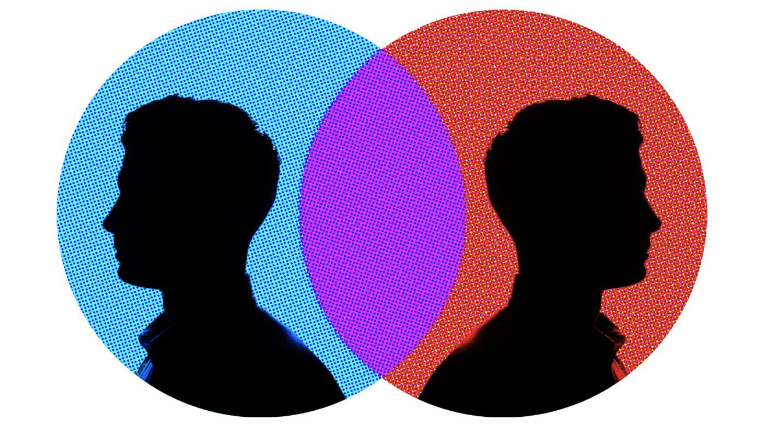We Can Reduce Political Divisiveness, But There's a Catch ...
An experiment to reduce political divisiveness showed amazing results, but with a major caveat.
A month ago on this blog I mentioned that More in Common would be releasing the results of an experiment to reduce partisan animosity. I attended a Friday webinar on the experiment and the results are published here.
One reason we're experiencing such high levels of partisan animosity is the perception gap — Democrats believe Republicans are more extreme than they actually are and Republicans believe Democrats are more extreme than they actually are. So More in Common sought to find out if we could reduce partisan animosity by correcting those misperceptions.
In the experiment, participants were asked view information about members of the opposite party. They were assigned to the control group or one of three different methods of conveying this information: 1) written, 2) video of an opposite party member, or 3) video of an opposite party member followed by a reaction from a member of the same party. All three methods reduced partisan animosity and method 3 performed the best by far — a 22 point difference for Republicans and 18 point difference for Democrats.
This is encouraging news. However, the study found that after only one week, partisan animosities were back to where they were before the experiment.
While much more research is needed in this area, the big takeaway for me is that reducing our current state of extreme polarization and divisiveness will take a long, sustained effort. There is no easy fix.
Hispanic Christian Nationalists
The Washington Post wrote about the prominence of Christian Nationalism among Hispanics.
ReAwaken America events have been a hub for election deniers, conspiracy theorists and those who discuss immigration as a plot to “replace us” — “us” being, by implication, White evangelical Christians.
On this score, Miami may appear to be an odd choice for the tour’s organizers: More than half of the city’s residents were born outside the United States and more than 70 percent are Latino. Yet there is evidence that white supremacy and Christian nationalism have made their way into the Latino community in the United States, including among the most violent fringe of those movements.
Political Violence, Racism, Xenophobia and Trump
PsyPost wrote about a recent study showing Trump support linked to increased support for political violence. These findings were mediated by racist and xenophobic attitudes, but it couldn't establish the path of causation. Are those with racist and xenophobic beliefs more likely to support Trump and political violence, or does Trump inspire racism, xenophobia and political violence among his supporters? More research is needed to answer this question.
QAnon and the Church
If you missed our Tuesday night webinar, it's available on our YouTube channel here.

